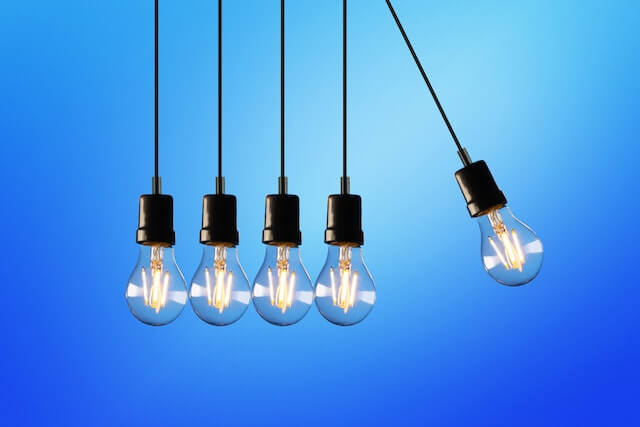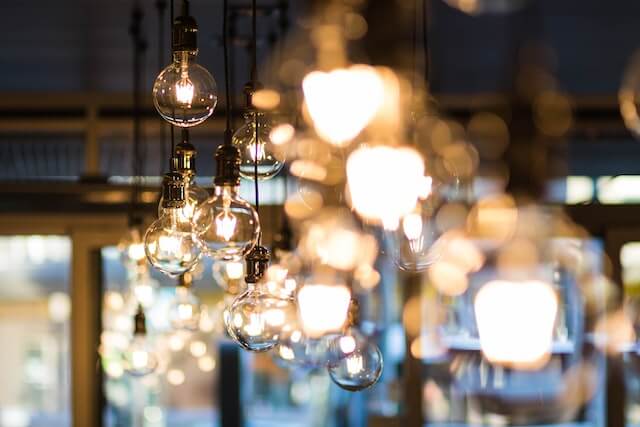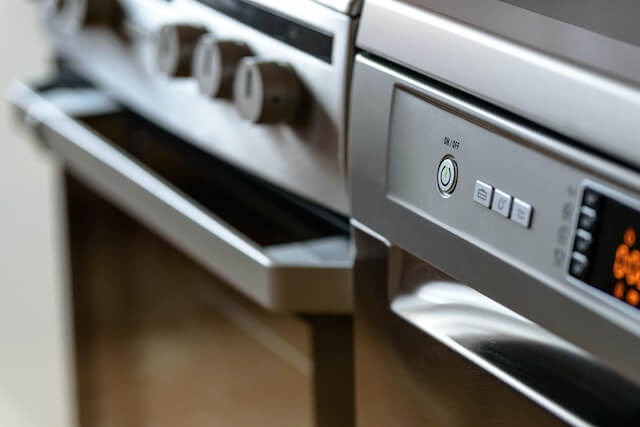I am excited to share my expertise on the topic of ” The Best Appliances, Lighting, and More.” As an energy expert, I have seen firsthand the impact that energy consumption has on the environment and our wallets. Energy efficiency is critical in reducing our carbon footprint and lowering energy bills. By choosing energy-efficient products, we can help promote sustainability and protect our planet for future generations.

In this article, I’ll provide an overview of the best energy-efficient products on the market, including appliances, lighting, heating and cooling systems, water management solutions, and renewable energy options. I’ll also discuss the benefits of each product and provide tips for reducing overall energy consumption through energy audits and everyday energy-saving habits.
When it comes to selecting energy-efficient products, it’s important to consider a variety of factors, such as energy efficiency ratings, sustainable materials, and smart technology. By making informed decisions about the products we use in our homes and workplaces, we can make a positive impact on the environment while also saving money on energy bills.
Throughout this article, I’ll be sharing my personal experiences and insights as an energy expert to help you understand the benefits of energy efficiency and make informed decisions about the products you use in your daily life. So, let’s dive into the world of energy efficiency and discover the best products to help us achieve a more sustainable future.
Table of Contents
1. Energy-Efficient Appliances
Energy-efficient appliances can help you save money on your energy bills while also reducing your carbon footprint. When shopping for energy-efficient appliances, look for the Energy Star certification, which indicates that the product meets strict energy efficiency guidelines set by the U.S. Environmental Protection Agency.
One of the best energy-efficient appliances you can invest in is a refrigerator. Refrigerators use a significant amount of energy, so choosing an Energy Star certified model can make a big difference. Look for models with top-mounted freezers, as they tend to be more energy-efficient than side-by-side or bottom-mounted freezers.
Another energy-efficient appliance to consider is a dishwasher. Look for models with multiple wash cycle options and a delay start feature, which can help you take advantage of off-peak energy rates. Consider investing in a model with a booster heater, which can heat water more efficiently than using your home’s hot water supply.
For laundry, consider investing in an Energy Star certified washing machine and dryer. Front-loading washers tend to be more energy-efficient than top-loading models, and look for dryers with moisture sensors, which can help reduce drying time and energy consumption.
Finally, for your cooking needs, consider investing in a convection oven, which uses a fan to circulate hot air and cook food more quickly and efficiently. Induction cooktops are also a great option, as they use electromagnetic energy to heat cookware directly, rather than heating the air around it.
By choosing energy-efficient appliances, you can save money on your energy bills while also reducing your carbon footprint. So, make sure to look for Energy Star certified products and consider the features and functions that can help you save even more energy.
2. Energy-Efficient Lighting

Switching to energy-efficient lighting is an easy way to save money on your energy bills and reduce your environmental impact. LED bulbs are the most energy-efficient lighting option available, using up to 80% less energy than traditional incandescent bulbs.
When shopping for LED bulbs, look for the Energy Star certification, which indicates that the bulb meets strict energy efficiency guidelines. Consider the color temperature and brightness of the bulb, as well as the fixture it will be used in, to ensure you get the right level of lighting for your needs.
In addition to LED bulbs, consider using natural light to your advantage. Make use of windows and skylights to bring in natural light and reduce your need for artificial lighting. You can also install light shelves or reflective surfaces to help distribute natural light more evenly throughout a space.
Another energy-efficient lighting option to consider is motion-activated lighting. These lights turn on when motion is detected and turn off automatically when no motion is detected for a set period of time. This can be a great option for areas such as hallways and closets where lights may be left on unintentionally.
Finally, consider installing dimmer switches to control the brightness of your lighting and save energy. Dimming your lights by just 25% can save up to 20% on energy usage. Make sure to choose dimmer switches that are compatible with LED bulbs for the best energy savings.
By making small changes to your lighting, such as switching to LED bulbs and installing motion-activated and dimmer lighting, you can save money on your energy bills while also reducing your environmental impact. So, make sure to consider these energy-efficient lighting options when updating the lighting in your home or workplace.
3. Energy-Efficient Windows
Windows can be a significant source of heat loss and gain in a home, which can drive up your energy bills. Energy-efficient windows can help reduce this heat loss and gain, making your home more comfortable and energy-efficient.
When shopping for energy-efficient windows, look for windows with the Energy Star certification, which indicates that the windows meet strict energy efficiency guidelines set by the U.S. Environmental Protection Agency. Energy-efficient windows are typically made with double or triple panes of glass, with a low-emissivity coating to reflect heat back into the room.
Another factor to consider when choosing energy-efficient windows is the frame material. Window frames made from materials such as vinyl, fiberglass, or wood composites tend to be more energy-efficient than frames made from aluminum or steel, which are highly conductive.
In addition to choosing energy-efficient windows, consider adding window treatments such as shades, blinds, or curtains to further reduce heat loss and gain. Look for window treatments with a high insulating value, such as honeycomb shades or thermal curtains.
Finally, consider the orientation of your windows when planning your energy-efficient upgrades. South-facing windows tend to receive the most direct sunlight, so consider installing shading devices such as awnings or overhangs to reduce the amount of heat that enters your home. North-facing windows tend to be the coldest, so consider adding additional insulation or choosing windows with a higher insulating value for these areas.
By choosing energy-efficient windows and taking steps to reduce heat loss and gain, you can make your home more comfortable and energy-efficient while also reducing your energy bills. So, make sure to consider these energy-efficient window options when planning your home upgrades.
4. Energy-Efficient Appliances
Upgrading to energy-efficient appliances is another way to reduce your energy bills and your environmental impact. When shopping for new appliances, look for those with the Energy Star certification, which indicates that they meet strict energy efficiency guidelines.
Consider the size of the appliance you need for your household, as larger appliances tend to use more energy. Also, look for appliances with features such as automatic shut-off or sleep mode, which can help reduce energy consumption when the appliance is not in use.
For refrigerators, look for models with a high energy efficiency rating and consider the size you need for your household. Keep in mind that larger models tend to use more energy, so choose a size that meets your needs without being too large.
When it comes to laundry, consider using a front-loading washing machine, which uses less water and energy than a top-loading machine. Also, look for models with features such as a high spin speed or an eco-friendly cycle to further reduce energy consumption.
For dishwashers, look for models with a high energy efficiency rating and consider the size you need for your household. Also, consider choosing a model with a delay start option, which allows you to run the dishwasher during off-peak hours when energy rates may be lower.
Finally, consider energy-efficient cooking options such as induction cooktops or convection ovens, which use less energy than traditional gas or electric models. Also, consider using small appliances such as microwaves or toaster ovens for smaller cooking tasks, as these appliances use less energy than a full-sized oven.
By upgrading to energy-efficient appliances, you can reduce your energy bills and your environmental impact. So, make sure to consider these energy-efficient appliance options when shopping for new appliances for your home.
5. Energy-Efficient Lighting
Lighting is another area where you can make energy-efficient upgrades in your home. Traditional incandescent bulbs are highly inefficient, as they convert only about 5% of the energy they consume into light, with the remaining 95% being wasted as heat. Upgrading to energy-efficient lighting can not only reduce your energy bills but also improve the quality of light in your home.
One popular option for energy-efficient lighting is LED (light-emitting diode) bulbs. LED bulbs use up to 80% less energy than traditional incandescent bulbs and last up to 25 times longer. They are also available in a range of colors and brightness levels, making them a versatile option for any room in your home.
Another option for energy-efficient lighting is compact fluorescent (CFL) bulbs. CFL bulbs use up to 75% less energy than traditional incandescent bulbs and last up to 10 times longer. However, they do contain a small amount of mercury, so it’s important to dispose of them properly.
When shopping for energy-efficient lighting, look for bulbs with the Energy Star certification, which indicates that they meet strict energy efficiency guidelines. Also, consider the brightness level you need for each room in your home and look for bulbs with a high color rendering index (CRI) for optimal color accuracy.
Finally, consider adding motion sensors or dimmer switches to your lighting system to further reduce energy consumption. Motion sensors can automatically turn off lights when a room is not in use, while dimmer switches allow you to adjust the brightness of your lights to suit your needs.
By upgrading to energy-efficient lighting and making smart choices when it comes to lighting in your home, you can reduce your energy bills and improve the quality of light in your home. So, make sure to consider these energy-efficient lighting options when planning your home upgrades.
6. Energy-Efficient equipments
Appliances can consume a significant amount of energy in your home, especially if they are outdated or inefficient. Upgrading to energy-efficient appliances can not only reduce your energy bills but also improve the functionality and convenience of your home.
When shopping for energy-efficient appliances, look for appliances with the Energy Star certification, which indicates that they meet strict energy efficiency guidelines. Energy-efficient refrigerators, for example, can use up to 40% less energy than traditional models, while energy-efficient washing machines can use up to 50% less water and energy per load.
Other features to look for in energy-efficient appliances include:
- Size: Choose an appliance that is the right size for your needs to avoid wasting energy on unused space.
- Features: Look for appliances with energy-saving features such as delay start, moisture sensors, and automatic shut-off.
- Maintenance: Choose appliances that are easy to maintain and repair to ensure they operate efficiently for years to come.
When replacing appliances, consider donating or recycling your old appliances to prevent them from ending up in a landfill. Some retailers even offer trade-in programs where you can receive discounts on new appliances when you trade in your old ones.
By upgrading to energy-efficient appliances, you can save money on your energy bills and reduce your environmental impact. So, make sure to consider these energy-efficient appliance options when planning your home upgrades.
7. Energy-Efficient Home Design

When designing a new home or renovating an existing one, it’s important to consider energy efficiency as a top priority. Energy-efficient home design can not only reduce your energy bills but also increase the comfort and health of your home.
Here are some energy-efficient home design considerations to keep in mind:
- Orientation: Orienting your home to take advantage of natural light and shading can reduce your energy bills and improve the comfort of your home. For example, positioning windows to face south can provide passive solar heating in the winter, while shading windows from direct sunlight in the summer can reduce cooling needs.
- Insulation: Proper insulation can reduce heat loss in the winter and heat gain in the summer, improving the energy efficiency of your home. Make sure to insulate walls, floors, and ceilings to the appropriate R-value for your climate.
- Windows: Choosing energy-efficient windows can also improve the energy efficiency of your home. Look for windows with low-E coatings, which reflect heat in the summer and retain it in the winter. Also, consider the U-factor and solar heat gain coefficient (SHGC) when selecting windows for your home.
- Lighting: Designing your home with natural lighting in mind can reduce the need for artificial lighting and improve the comfort of your home. Consider adding skylights, clerestory windows, and light shelves to maximize natural light.
- HVAC: Heating, ventilation, and air conditioning (HVAC) systems can consume a significant amount of energy in your home. Choosing energy-efficient HVAC systems, such as geothermal or air-source heat pumps, can reduce your energy bills and improve the comfort of your home.
By incorporating these energy-efficient home design considerations into your home design or renovation, you can reduce your energy bills, increase the comfort of your home, and reduce your environmental impact. So, make sure to consider these energy-efficient home design options when planning your home upgrades.
In Conclusion Energy-efficient products and practices can make a significant impact on reducing our energy consumption and minimizing our carbon footprint. By investing in energy-efficient appliances, lighting, home design, and behavior, we can save money on our energy bills, improve the comfort of our homes, and reduce our impact on the environment.
When choosing energy-efficient products, it’s important to look for energy labels and certifications, such as ENERGY STAR, to ensure that the product meets energy efficiency standards. Additionally, implementing energy-saving practices, such as turning off lights and unplugging electronics when not in use, can also make a big difference in reducing our energy consumption.
By taking small steps towards energy efficiency, we can make a big impact on reducing our carbon footprint and preserving our planet for future generations. So, let’s all commit to making energy efficiency a priority in our homes and daily lives.
